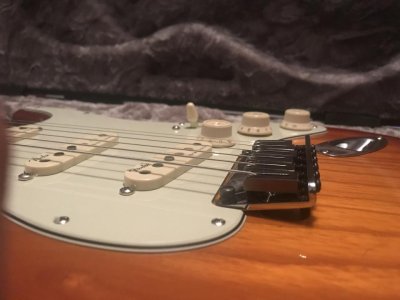Explorer84
New member
I bought a used Fender Elite Strat a few years ago and I always had an issue with it going out of tune when I used the whammy bar. I had read several stories where Strat owners had no problems with their whammies staying in tune. So I decided to completely float the bridge. I set the bridge up parallel to the face of the guitar. Now the guitar stays in tune no matter how aggressive I use the whammy. One thing that I noticed is that the guitar has a stiffer feel to the action. Small price to pay for tuning stability. I should’ve not been so lazy and set it up completely floating a while ago. It would’ve saved me a lot of aggravation.

